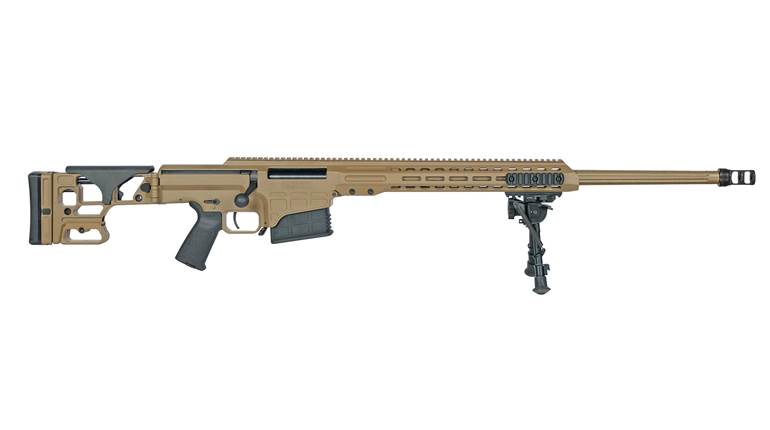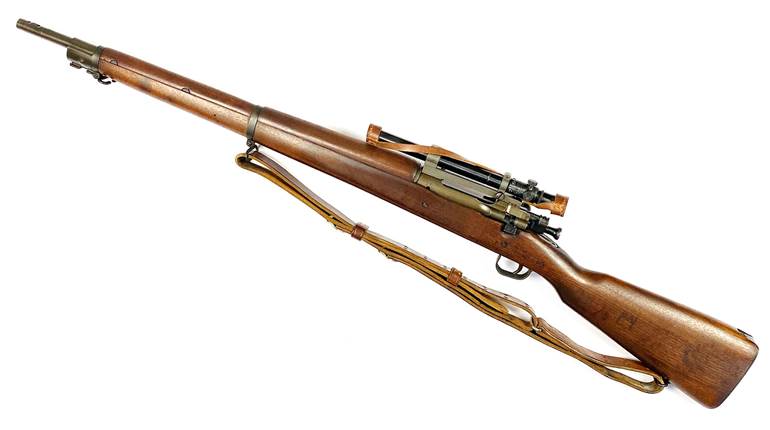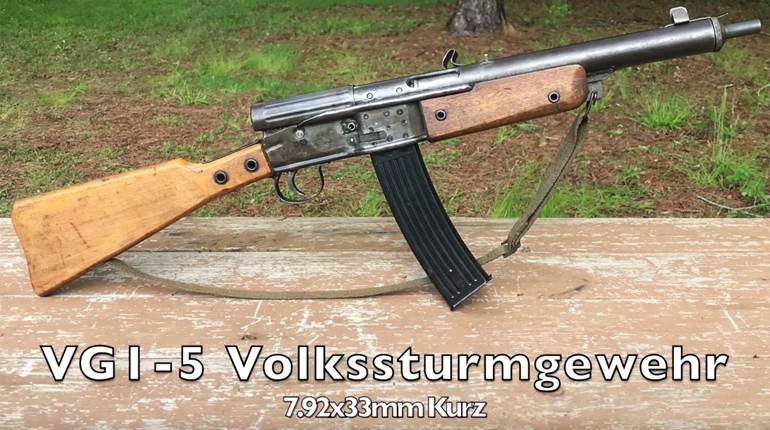
This article appeared originally as "A Grisly Business" in the August 2003 issue of American Rifleman. To subscribe to the magazine, visit the NRA membership page here and select American Rifleman as your member magazine.
During the final years of World War II, Australia developed and manufactured its own sniper rifles based on the Short, Magazine Lee-Enfield Rifle in .303 British. A combination of local improvisation and careful hand assembly turned these rifles into deadly arms.
The Australian Army entered World War II with only a limited number of Great War-vintage sniper rifles obtained from England in the 1930s. These were .303 British Pattern '14 (P '14) rifles made in the United States early in World War I and fitted with British Pattern 18 telescopic sights in England later in that war.

After hard service in North Africa and the Pacific during World War II, most of these P'14s were simply worn out. As the rifles and the scopes were no longer manufactured,spare parts were almost non-existent. Effective sniping was (and is) a trademark of the Australian Army, so an alternative rifle had to be found.
The Short, Magazine Lee-Enfield Mk III (or No. 1 Mk III as renamed in 1926) formed the basis of the new Australian sniper rifle mainly because it was the only military rifle in production in Australia at that time. The government small arms factory at Lithgow in New South Wales commenced manufacturing SMLEs in 1913, and it had significant experience with the Lee-Enfield by the 1940s.
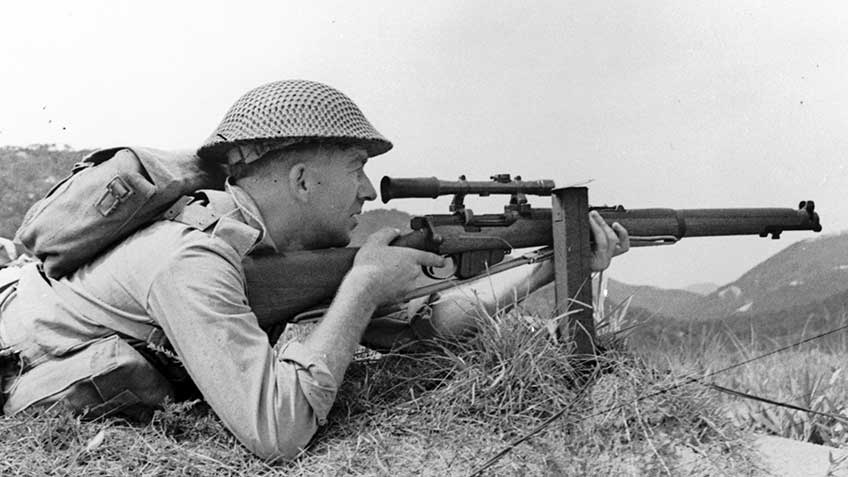
In the early 1930s, Lithgow produced a heavier profile barrel for the SMLE, which improved its accuracy and consistency. The SMLE can be fickle when it comes to maintaining a constant zero through different weather conditions and over a large number of rounds, a point very important to both competitive shooters and snipers. The heavy barrel was the same profile as that of the original pre-1902 Long Lee Enfield, but shortened by 5".
It proved popular with rifle club marksmen and, in the mid-1930s, Lithgow began to produce a heavy-barreled marksman's rifle for the Australian Army. These rifles have an "H" stamped on the small of the butt and are usually fitted with an adjustable target aperture rear sight. Some view these as an interim sniper rifle, but their primary role was to put military marksmen on an equal footing with their civilian counterparts in competition.
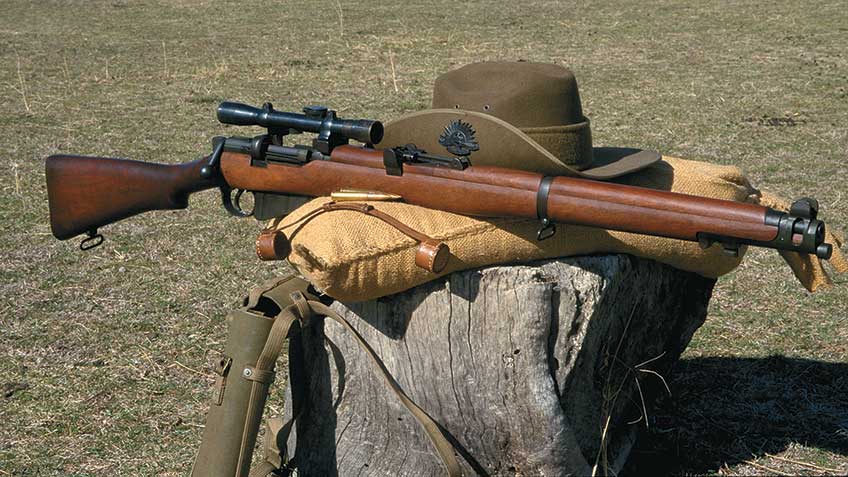
Early in World War II, civilian rifle club members were called on to hand in their SMLE target rifles to aid the war effort, much to the consternation of some who thought they might come in handy against a feared Japanese attack. It was these surrendered actions that, by and large, formed the basis for the new sniper rifle.
The receivers were mostly World War I Australian or British production, and they were used because the old hands at Lithgow determined them to be made of superior steel and reckoned that they "flexed better" and made for a more accurate rifle.

These actions were thoroughly refurbished and given a dull Parkerized finish, and some were fitted with new bolts. The heavier target rifle barrel is marked with a "H" on the top of the Knox form, and an original unit will have a '44 or '45 production date stamped on the safety catch side of the barrel adjacent to the "H." Both the receiver and barrel were coated with a dull green rust-preventative paint below the wood-line.
The rifles were fitted with locally manufactured telescopic sights that conform to a World War 1-vintage British design. These Pattern 18 scopes have 3X magnification and a seven-and-a-half-degree field of view. Elevation adjustments were made via a drum on top of the scope and ranged from 200 to 1,000 yds. Lateral adjustments were made via a rotating lens group at the front of the scope, a cumbersome process that required a special tool—as well as a lot of patience.

While still an effective and robust unit, the Pattern 18 telescope was obsolete long before World War II. It was produced for the simple reason that plans for it were the only ones that could be obtained at the time. The Australian Optical Company of Melbourne was responsible for its manufacture, and the quality of the finished product was comparable to most other optical equipment of that period.
Two versions were made; the difference between them being the height of the scope rings. The official terminology for these at the time was "medium" and "short," but they are now simply referred to as "high" and "low" mounts. The low mount had the advantage of putting the optical axis of the scope closer to the bore, making the rifle easier to shoot comfortably.
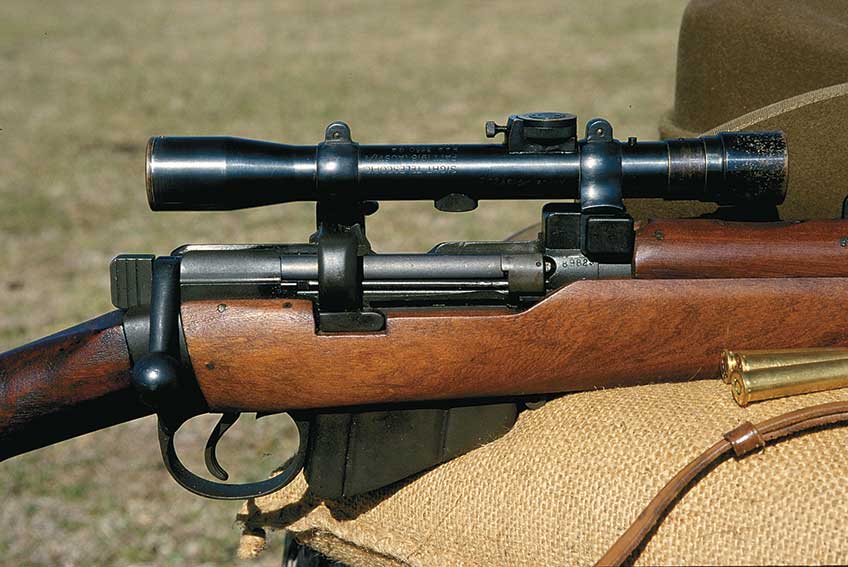
The high mount allowed for the standard iron sights to be used while the scope was still fitted, a feature that could be a definite tactical advantage under some conditions. Both high- and low-mount scopes were attached to the rifle via quick-release claw foot mounts and were interchangeable, except for the need for a slight scallop to be taken from the rear handguard to fit the low mount.
The rifle's serial number was neatly, but faintly, hand-engraved onto the scope tube. The scope mount bases had very small serial numbers on them (and I mean get-out-the magnifying-glass small), which should match similarly sized numbers on the scope rings.

The same number also appeared on some of the scope's internal components, but pulling one apart to check is not recommended. Each scope was issued with a canvas-covered hard carry bag and leather lens caps held together by a strap. A rubber eyepiece was originally used with the Pattern 18 scope to produce a sharper sight picture.
Particular attention was paid to the "stocking up" of a sniper rifle. Even with a heavy barrel, the fit of the fore-end around the receiver's recoil lugs, the barrel and the nose cap was crucial to the rifle's accuracy potential. Proper fit dictated whether or not the rifle's point of impact changed as it heated up. The topic of stocking up an SMLE could easily consume a large article on its own, but suffice to say that the fore-end on a genuine Lithgow SMLE sniper fits like a well-worn, comfortable glove.

The original fore-ends were all made of coachwood by Sydney-based sporting goods company Slazengers in 1944 or 1945, and were stamped as such (e.g. "SLAZ 44") on their underside. The screw hole for the internal barrel band near the center sling swivel was plugged, as that item was not needed with a heavy barrel. The butt can be of normal, short or long length and usually bears no markings other than the "MA" marking signifying Lithgow production and the month and year of its manufacture.
A typical marking would be "MA" over "3/45." In July 1945, with production about 75 percent completed, an add-on cheekrest was approved for use and was designed to attach to the butt using two brass screws. Cheekrests were supplied by the factory for all rifles, but not fitted as it was thought best to allow unit armourers to attach them to suit each individual. Close scrutiny of World War II and Korean War photos, and interviews with several veterans, suggests that the cheekrests did not see active service in either of those conflicts.

Another feature added near the end of production and, theoretically at least, retrofitted to earlier rifles was a king screw sling swivel that assisted use of the sling to steady the rifle while on aim. The swivel was of the same basic design as those used for many years previously by civilian target shooters, but the presence of a Lithgow manufacturing mark and a broad arrow acceptance stamp will differentiate the genuine item.
The end of World War II came before the original contract for 2,500 Lithgow sniper rifles could be completed. The final production figures are 1,131 high mounts and 481 low mounts for a total run of 1,612. Most of the components necessary for the original contract had already been manufactured prior to its cancellation, and a number of complete spare scopes and unfinished scope tubes and mounts made their way onto the surplus market after the war.

Because of their rarity and popularity, an Australian Lee-Enfield sniper rifle fetches a high price; so it pays to be sure you are buying the real thing. The first thing to do is check the serial number against the list published in Ian Skennerton's excellent reference book, “The Lee Enfield Story.” The list appears in the section covering Australian production and will confirm the serial numbers of the actions used in the production run. It will also detail which type of scope was fitted and the date the rifle was sent to store.
A batch of 100 rifles was returned to Lithgow for a factory-thorough repair (FIR) in 1954 and, during that process, many were converted from high- to low-mount scopes as the latter were the only spares available. The list has details of those rifles as well.
The World War II Australian sniper rifles were the product of improvisation that linked the only available rifle and scope into a workmanlike combination that was both durable and deadly in the right hands. Today, they are a highly desirable collectable that can still be a lot of fun at the rifle range.













